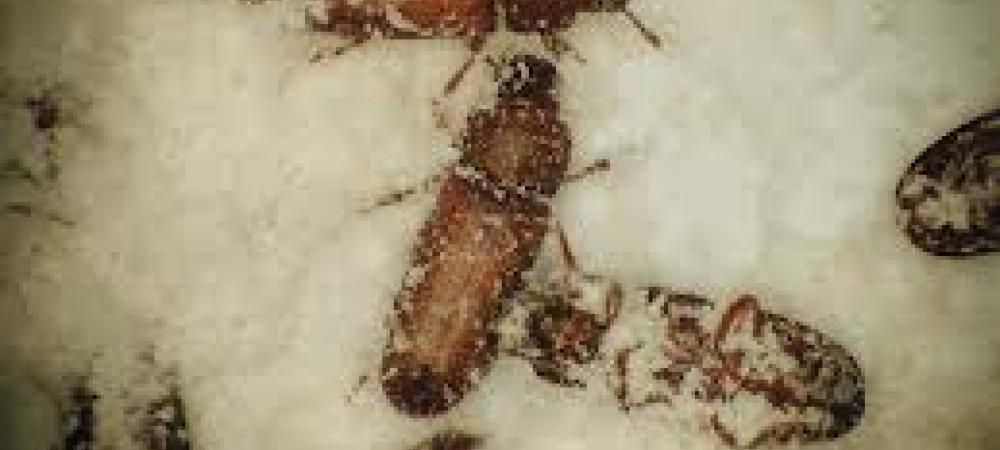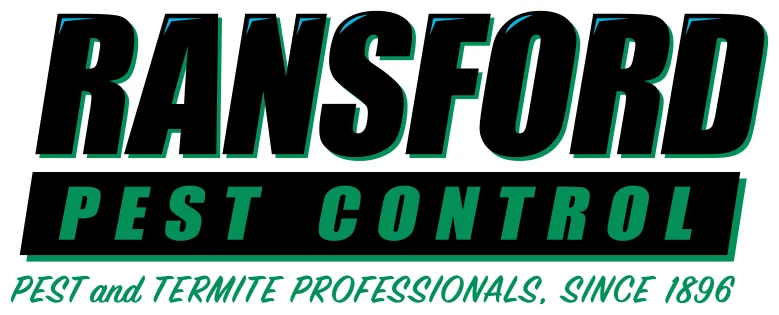Flour Bugs & Other Kitchen Pantry Pests

Why Do Insects Like Flour?
When you open up your bag of flour, the last thing you expect or want to see is bugs in it; there are no ifs, ands, or buts about it – once you find bugs in your flour, the entire bag has to be tossed out. It’s a huge annoyance because it means you have to get rid of food as well as the money you spend on that food. But what type of insects will show up in flour? When you look into your flour, you may find one of the following insects:
- Indian meal moth larvae
- Flour beetles
- Weevils
- Silverfish
- Other types of beetles and weevils.
Many of these insects are small, and it can sometimes be hard to see if they are within the flour rather than resting on top of it.
Where Do Flour Pests Come From?
Like all pests, flour pests originally come from outside. However, with some flour issues, it may be that they have come from a more internal source. Sometimes, you may bring a bag of flour home only to discover it has already been contaminated by bugs. This can happen at any location, such as when the bag is on the shelf at the grocery store, when it is in transit, or even at the factory. None of these locations is ever excited to learn that insects have been discovered in their flour and will do everything they can to keep flour safe and fresh.
For some pests, such as Indian meal moths or silverfish, they may already be living in your home. When an Indian meal moth lays eggs, it will lay them near a food source. It may be that the flour was the nearest and best source, so when the eggs hatched, the larvae chewed through the packaging and went on to eat the flour inside. Silverfish are notorious for chewing through packages to get to the food.
What are Flour Bugs?
A variety of pests like to eat flour. Since flour is a grain, and insects eat grain, it is a source of nutrition for them. But what are these flour bugs, and how can you identify them?
Flour Beetles
If you find red bugs in flour, you’ve got flour bugs, also known as flour beetles. What are flour beetles? They’re tiny beetles, usually no longer than 4 mm in length. Most are reddish-brown with very little color change across the body. You might describe most as a rusty red or a shiny brown. There is a black variety as well.
Despite this similarity, there is a range of flour beetle species. They’ve got some of our favorite names of all bugs. Sure, there’s a red flour beetle and a black flour beetle to keep things simple. There’s also the confused flour beetle, the depressed flour beetle, both a horned and slender-horned species, and both small-eyed and long-headed varieties. Whoever named flour beetles had a lot of fun doing so.
Indian Meal Moth
Indian meal moths in their adult form are gray and have copper-colored front wing tips. This copper color makes them rather easy to identify. If you have a lot of these in your home, chances are that at some point, they mated, and the females laid eggs somewhere. They may be in any number of locations, but the main point is that she will lay them near a food source. When larvae hatch, they will head straight for the food, which can be anything from a package of flour to cereals. Packaging won’t stop the larvae, which is what makes them pests you don’t want in your home. They will chew through the packaging to get at the food inside.
As they eat, they cover food and other areas with a silken webbing, so if you see webbing, then there are likely larvae around or they have passed through the area. Food that has been eaten and damaged by Indian meal moth larvae should be thrown away; areas should be vacuumed to take away any additional food particles and insects that are lingering.
Eventually, the larvae will create a cocoon in order to turn into a moth. You can help to break the cycle of an Indian meal moth infestation by searching out the cocoons. Check your walls, ceiling, cracks, behind appliances, or even behind picture frames on the walls. Cocoons or crawling larvae will be up high somewhere so the cocoon can hang, and they can fly free when the time comes. You can get rid of the larvae or cocoons you see and take additional precautions by sealing up foodstuffs in glass jars or plastic containers. Move pet food to another area if it can’t be sealed.
What Should I Do With Flour Bugs?
You won’t have fun picking flour beetles out of your flour. In fact, just don’t. It’s best to simply dump the flour. They’ll have tracked around bacteria, and chances are very good they’ve laid eggs in there. It’s not a simple case of picking them out; it’s a simple case of trashing the bag of flour. Do not use it. Although they’re named flour bugs, you’ll also find them in other cereal and baking products.
How to Get Rid of Flour Beetles
If you don’t find bugs in flour or other foodstuffs but see them nearby, we’d still recommend inspecting your food. Flour beetles don’t spend all their time in the packages themselves. In order to get rid of flour beetles, you’ll want to first dump any product they’ve infested. Don’t just put it in your kitchen trash – remember, they’re pretty mobile. Take it all the way outside to a trash receptacle that you can close tightly. Flour bugs are pretty resilient.
Then, vacuum out any area that contained food they infested. They can spread quickly across various products. Remember, don’t eat anything they’ve infested. There are almost certainly beetle eggs in those products. Store products in sealed containers from now on.
Contact a Professional Pest Control Company
A general home or commercial pest control service is the best preventative for any and all food pests. For flour bugs, Ransford Pest Control can do a full inspection and cleansing. Flour bugs are difficult to get rid of. A professional can apply insecticides in a way that’s safe for you and your family. Contact Ransford today to learn your options with pantry pests.
